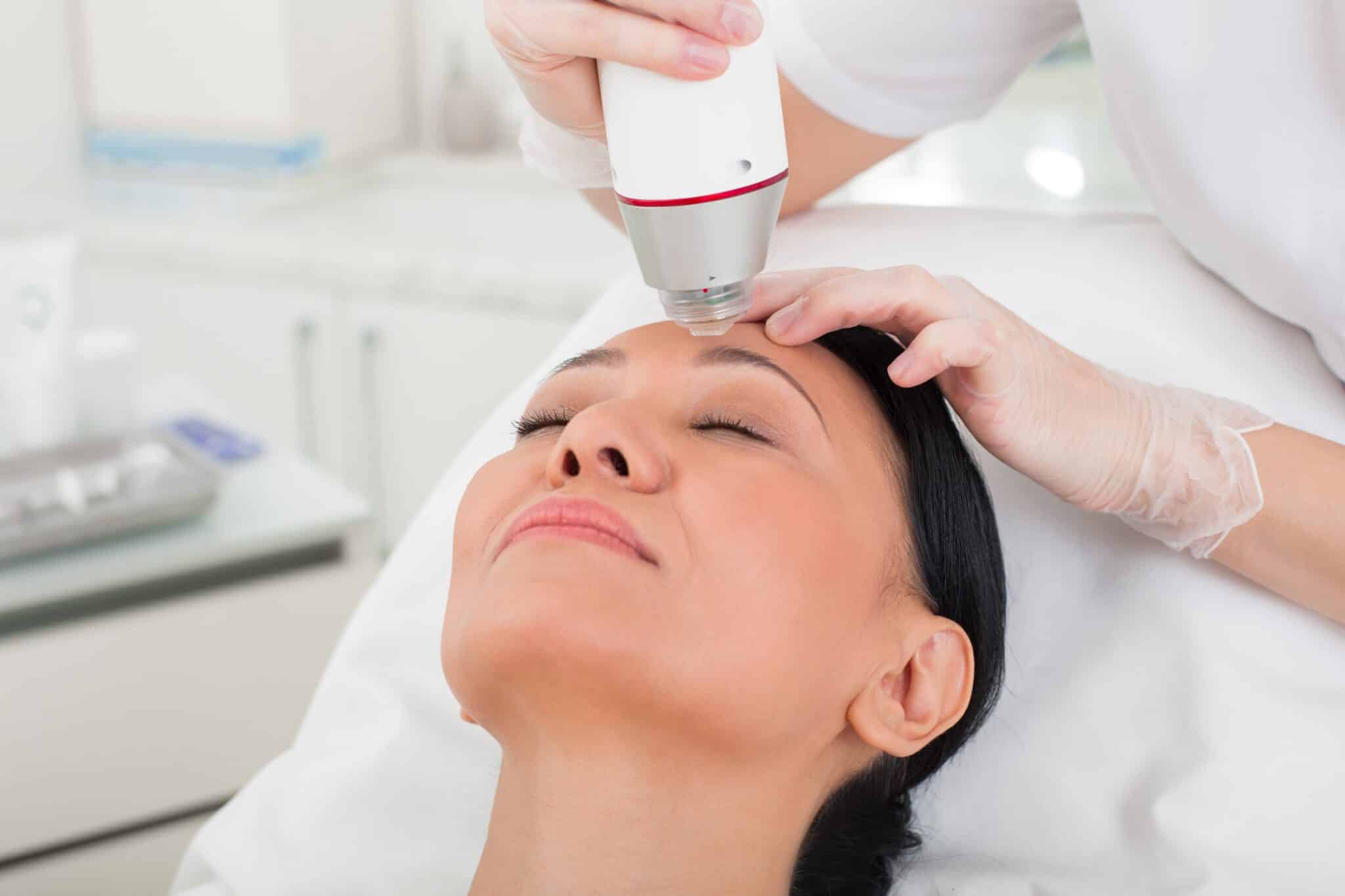
Acne scars can be an ugly reminder of past breakouts, affecting your self-esteem and overall confidence. If you're considering acne scar removal treatment, you might wonder which is best: subcision, laser, or microneedling. Each treatment has its own advantages and is suitable for different acne scars and skin conditions.
Read on to find out more.
Acne scars result from the skin's healing after severe or inflamed acne. When the skin tries to repair the damage caused by acne, it can produce too much or too little collagen, forming different types of scarring.
These scars can look like depressions in the skin, raised areas, or discoloured spots. Their appearance varies, depending on the severity and type of acne that caused them.
The main types of acne scars include:
Subcision is a minor surgical procedure used to treat depressed acne scars, especially rolling scars.
During the procedure, a needle is injected under the skin to release dense fibrous bands that tether the scar to deeper tissues. By releasing these bands, the skin is allowed to lift, reducing the appearance of the scar.
Subcision is often combined with dermal fillers, which are injected into the treated area to further enhance results. Hyaluronic acid (HA) fillers are commonly used, though collagen-stimulating fillers are becoming increasingly popular. These fillers help rebuild the skin’s structure, leading to smoother, more even skin.
Laser treatment works by using focused light to remove layers of skin, promote collagen production, and encourage the formation of new, healthy skin.
There are several types of acne scar removal lasers available, each targeting different layers of the skin and types of scars:
Microneedling is a minimally invasive treatment that can significantly improve the appearance of acne scars by harnessing the body's natural healing processes. A common method is Fractional RF microneedling.
Fractional RF microneedling combines microneedling with the power of radiofrequency energy. A specialised device equipped with fine, insulated needles creates tiny punctures in the skin. As the needles penetrate, they simultaneously deliver RF energy deep into the dermis.
This dual-action process not only triggers the body's natural healing response but also heats the underlying layers of the skin, firing up collagen and elastin generation.
When deciding which acne scar removal treatment is best for you, several factors need to be considered.
Different skin types respond differently to various treatments. For example, darker skin tones are more prone to hyperpigmentation, so non-ablative lasers or radiofrequency treatments are often safer choices.
Ablative lasers may be more effective for deeper scars but carry a higher risk of pigmentation changes in darker skin.
The type and depth of your scars significantly influence the effectiveness of each treatment. Deep, tethered scars with significant volume loss, especially in the deeper layers, respond best to treatments like subcision and fillers. These therapies address the underlying structural issues, releasing the scar tissue and adding volume where it's been lost. However, these deep treatments aren’t effective for more superficial or textural scarring.
For textural or superficial scars, microneedling is more appropriate. It targets the upper layers of the skin, improving texture and tone without the need for deeper interventions.
While individual treatments for acne scar removal are effective, aesthetic doctors often recommend combining these therapies to maximise results.
For example, combining subcision with fillers, particularly collagen-stimulating fillers, creates a synergistic effect. Subcision releases the fibrous bands tethering the skin, while the fillers add volume and stimulate collagen production. Following this with laser treatments can further enhance collagen stimulation and skin remodelling, leading to more significant improvements in scar appearance and skin texture.
A combination of subcision and microneedling can also be beneficial. One study has found that it’s particularly effective in treating atrophic acne scars in dark skin, with rolling and boxcar scars showing more improvement than ice-pick scars.
Leveraging the strengths of multiple treatments can achieve more comprehensive and long-lasting results, giving patients smoother, more even skin.
Various factors influence the choice of treatment for acne scar removal. A qualified aesthetic doctor can help you make the best decision by accounting for your aesthetic goals and health needs.
At 1Aesthetics, we're committed to helping you achieve smoother, clearer skin. We offer comprehensive acne scar removal treatments in Singapore, tailored to your skin type and condition. Our doctor will work with you to develop a customised treatment plan that may include subcision, laser therapy, microneedling techniques or a combination of treatments to achieve the best possible results.
Book an appointment with us today.
References
Bhargava S, Kumar U, Varma K. Subcision and Microneedling as an Inexpensive and Safe Combination to Treat Atrophic Acne Scars in Dark Skin: A Prospective Study of 45 Patients at a Tertiary Care Center. (2019.) Journal of Clinical and Aesthetic Dermatology. Aug;12(8):18-22. https://www.ncbi.nlm.nih.gov/pmc/articles/PMC6715122/
Address:
1Aesthetics, Medical & Surgery
#14-90 The Central Tower 1
8 Eu Tong Sen Street
Singapore 059818
Mon-Fri 10 AM to 730 PM
Sat 10 AM to 6 PM
Phone / WhatsApp:
+65 66125173 / +65 84899962
Email:
[email protected]